
Made in Russia: Russian Fashion Spreads Worldwide
/ Главная / Russkiy Mir Foundation / Publications / Made in Russia: Russian Fashion Spreads WorldwideMade in Russia: Russian Fashion Spreads Worldwide
Svetlana Smetanina
Today in the world fashion capitals (New York, Milan, Paris) showrooms are open that specialize primarily in working with Russian brands. And Russian fashion brands are starting to make up an increasing share in the collections of practically all major clothing stores.
Just ten years ago or so, it would have been difficult to imagine that clothes by Russian designers would be able to contend with Western brands—and not only on the domestic market but all over the world. For a long time fashion was more of a show in Russia than a business. This may have been connected to the fact that fashion in Russia never existed in the same sense in which it existed in France: famous fashion houses declaring “guidelines” for the whole world on what to wear and how. In prerevolutionary Russia, all fashions also came from Paris. And perhaps the only Russian designer of the time would have been Nadezhda Lamanova, who sewed brilliant court accessories and received the honorary title “Vendor of the Court of His Imperial Highness.”
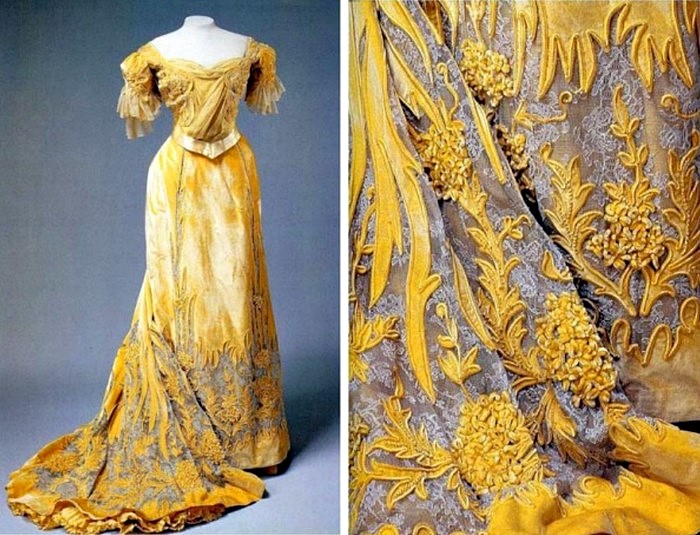
Dress by Nadezhda Lamanova
In the late Soviet period, the honorary title of “Designer Number One” rightfully belonged to Vyacheslav Zaitsev, who dressed all of the elite of the time. Later, the title of “court designer” went to Valentin Yudashkin, who managed to work out mutually beneficial arrangements with practically every prominent figure in Russia.
In the 1990s the designer’s profession in Russia became incredibly popular—it seems there did not remain a single educational institution where the design major wasn’t studied in one form or another, as a special or an elective course. Selective tours of the most famous contest for young designers, “Russian Silhouette,” traveled all across the country, and this year in Moscow alone 500 applications were made to participate in it.
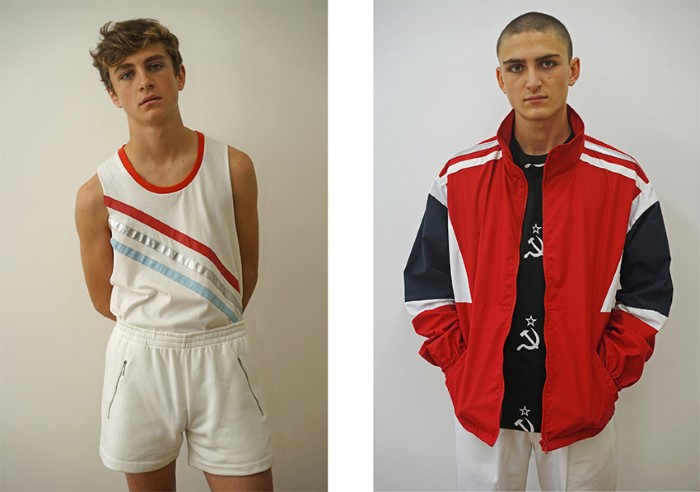
In his collections Gosha Rubchinsky successfully plays on both Soviet and ‘90s urban motifs.
And nonetheless, for a long time it seemed that even the most successful Russian designers were doomed to exist as studios for several dozen wealthy clients, while in popular fashion the tone would be set as before by Western brands, who took over the world fashion market. But somewhat unexpectedly, divisions with clothing from Russian designers suddenly started to appear in many large stores featuring many brands. And not only in Russia.
Today, not a single major worldwide Fashion Week goes by without Russian designers. What’s more, some of them don’t merely participate in the world of fashion, but they even set the tone there. Take for instance the Russian designer Gosha Rubchinsky, whose “Hello from the ’90s” collections look a little crazy to his compatriots but in the West are worn by such celebrities as Kristen Stewart and the Kardashians. Recently, photographers “caught” Kanye West in athletic pants by Gosha Rubchinsky. And Justin Bieber walked out on stage in a T-shirt by a Russian designer with the Russian word “Rassvet” (Sunrise) on it. Today Russian designers work with fashion houses like Comme des Garcons and Burberry.
The general director of Fashion Consulting Group, Anna Lebsak-Kleimans, believes that the current “made in Russia” trend in fashion is no accident: Russian designers seized on the spirit of the time and are offering precisely those products that will resonate in the souls of Russian and Western trend-setters.
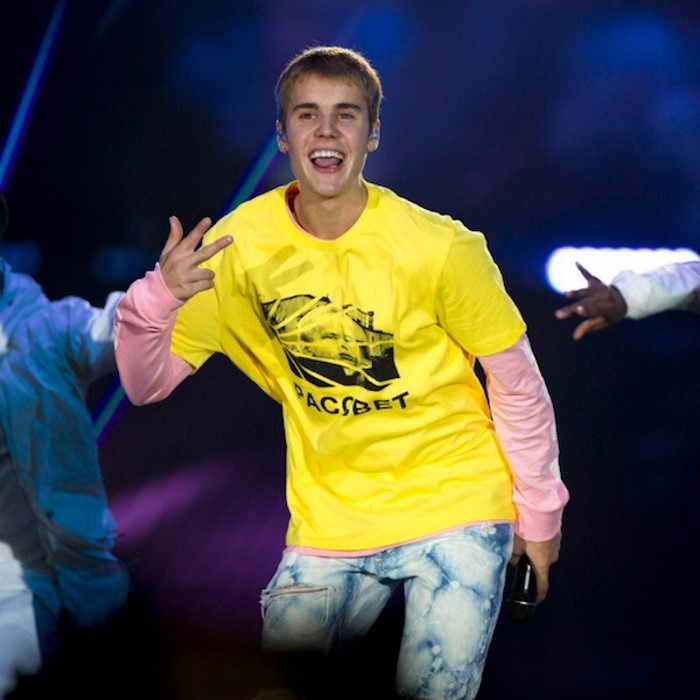
Justin Bieber in a T-shirt by a Russian Designer
Clothing by the Russian designers Gosha Rubchinsky and Ulyana Sergeenk is worn by many Western stars. What accounts for this success and how were these designers able to find their niche in the Western fashion market?
On the one hand, the success of these designers is tied to how they respond to Western society’s expectations and preformed conception of “Russian soul.” On the other hand, it is tied to the fact that they don’t adopt an exotic or parochial view of fashion, but, quite the opposite, fit themselves into global trends. The images created by these designers are wholly comprehensible to the Western public. They capitalize on their “Russian-ness” in an educated way, and at the same time their works correspond to European fashion sense. What’s more, Sergeenko and Rubchinsky both have a recognizable and consistent authorial “signature,” which we “read” in their models and collections.
For more than 100 years already—beginning with the time of Paul Poiret, whose spectacular gatherings attracted the whole French beau monde of his time—leading fashion designers invent not only silhouettes, but also their own legends. And in the case of the Russian fashion designers popular in the West today, you could say that the ones who become popular are the ones who lead an active public life.
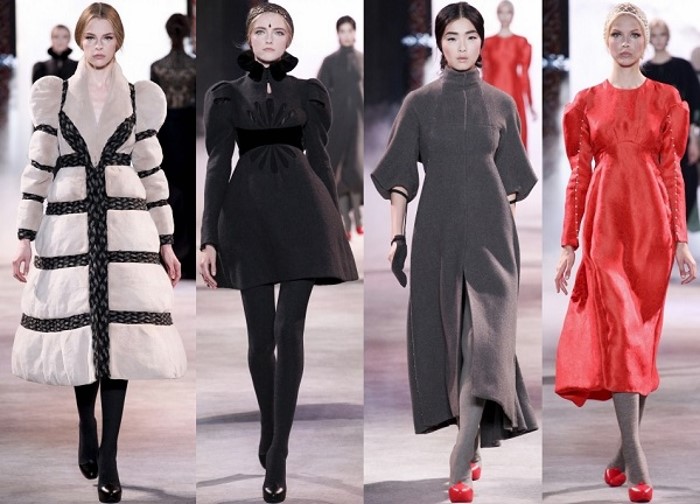
Ulyana Sergeenko plays successfully on “Russian style”
What other Russian designers are known in the West? In what countries are Russian designers especially popular?
One of the most famous Russian designers in Europe and the US is Alena Akhmadullina. The complex mythological imagery and pagan motifs of her prints have been cited by the leading fashion publications throughout the past decade. Another designer with a personal signature is Vika Gazinskaya. She is a wonderful stylist, and her public image and style are the best example of true fashion DNA. Talent and an active social life also helped her to become successful and in-demand.
The VASSA brand is also actively developing in the US. Meanwhile, it deals not only with innovative multibrand stores, but also with major American chains. One could also count Andrei Artemov (Walk of Shame) among the successful designers; another success is the brand of expensive leather accessories with the monarchal symbolism of the IRFE. This was a brand in the 1920s—the Parisian fashion house of Felix and Irina Yusupov. It was resurrected by the Muscovite Olga Sorokina, and at present it is shown in 23 countries.
Internet stores and marketplaces are considered to be the most active and open to new names. Thus, for example, one of the first companies to work with Russian designers was a major site for selling designer clothes, net-a-porte.
Designers abroad are usually introduced by an agent: the showroom. In New York, Milan, and Paris, there are showrooms that primarily specialize in working with Russian brands and recommend their collections to their client base from United Arab Emirates, Japan, USA, Europe, and so forth.
The primary purchases of these new designers are being made by concept stores, not by department chains. The first who started to buy interesting designers were the Japanese, who are predisposed to favor everything new, unusual, and original. The next market was the United Arab Emirates and other Arab countries. Because the Russian “Byzantine style” resonates with their tastes, “decorative” collections made from expensive fibers especially catch their interest. The next group who may pay attention to new names are buyers from the USA, who are also democratic and open. The most critical will always be the Europeans.
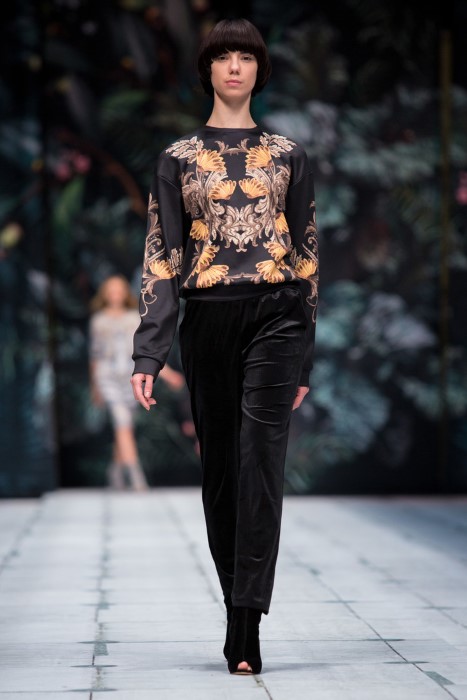
Alena Akhmadullina’s unusual prints won over the trendsetters
Is this renown limited to the “stars” or do Russian designers have a pathway into an international mass market as well?
No major Russian brand has ever run a global marketing campaign. Knowledge about Russian designers in the West is limited to a quite narrow circle of prominent trendsetters.
It’s not only about having a quality fashion product: that is a necessary condition for success, but not a sufficient one. To have success in a new market, above all, one’s collections and ways of doing business need to correspond to the standards of this new market. This means that, besides quality goods, it’s necessary to have the ability to ensure all the logistical, technical, and documentary support according to the country’s laws. For a young sales brand or designer, this is a new skill set, and one needs to match it.
Very often it is technical issues that stall development. One of the most extensively thought out releases might be that of the VASSA brand on the US market. The first steps were getting a place in the showroom and holding professional showings for the press and buyers in one of the most prestigious sites for the New York public—the Four Seasons hotel. VASSA is represented in the US market for a third season, and sales are quickly growing. But what’ especially important is success among the large-scale buyers—department stores.
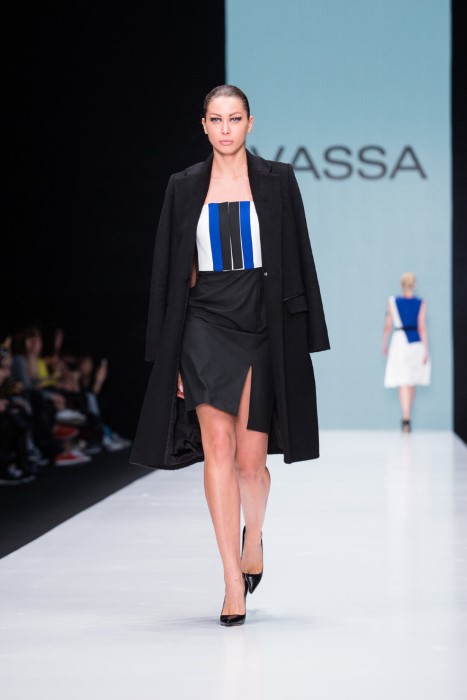
VASSA Collection
How does success in the West affect the sales of Russian designers at home?
You could say that we have one set of heroes abroad and another in Russia. The designers who made a loudly broke into Western markets include Gazinskaya, Akhmadullina, Sergeenko, Rubchinskii, Artemov, and others. At the same time, certain designers place their stakes on developing their own brand primarily within the country and have considerable success. This is shown in their high visibility and impressive sales. Such designers include Viktoria Andreyanova, Cyrille Gassiline, Vemina (Yulia Yanina), Igor Chapurin, Yelena Shipilova, and of course fashion maestros – Vyacheslav Zaitsev and Valentin Yudashkon.
See also: “The Latest Fashion from Grandma’s Trunk”
Today Russian fashion sections are opening in many large shopping centers. Is that somehow connected to the popularity of these brands among consumers?
Without a doubt, the popularity of the “made in Russia” trademark is growing. According to sociological surveys, for 72% of Russians the fact that an item was produced in Russia positively influences the decision to buy, and for 52% of those asked “consumer patriotism” is their motivation for becoming owners of Russian clothing in particular. A great number of Internet stores for Russian brands have appeared in the country today. For the most part, these are smaller niche projects, designer clothes, and footwear. This trend is supported by all major Russian retailers, both traditional and online: Russian fashion brands are making up an ever-increasing portion of the collections of practically all multibrand stores.
New publications

 Mikhail Kalatozov, a director who transformed the world of cinematography in many ways, was born 120 years ago. He was a Soviet film official and a propagandist. Above all, he was capable of producing movies that struck viewers with their power and poetic language.
Mikhail Kalatozov, a director who transformed the world of cinematography in many ways, was born 120 years ago. He was a Soviet film official and a propagandist. Above all, he was capable of producing movies that struck viewers with their power and poetic language.  Ukrainian authorities have launched a persecution campaign against the canonical Ukrainian Orthodox Church (UOC), the biggest one in the country's modern history. Over the past year, state sanctions were imposed on clergy representatives, searches were conducted in churches, clergymen were arrested, criminal cases were initiated, the activity of the UOC was banned in various regions of the country, and monasteries and churches were seized.
Ukrainian authorities have launched a persecution campaign against the canonical Ukrainian Orthodox Church (UOC), the biggest one in the country's modern history. Over the past year, state sanctions were imposed on clergy representatives, searches were conducted in churches, clergymen were arrested, criminal cases were initiated, the activity of the UOC was banned in various regions of the country, and monasteries and churches were seized.  When Nektary Kotlyaroff, a fourth-generation Russian Australian and founder of the Russian Orthodox Choir in Sydney, first visited Russia, the first person he spoke to was a cab driver at the airport. Having heard that Nektariy's ancestors left Russia more than 100 years ago, the driver was astonished, "How come you haven't forgotten the Russian language?" Nektary Kotlyaroff repeated his answer in an interview with the Russkiy Mir. His affinity to the Orthodox Church (many of his ancestors and relatives were priests) and the traditions of a large Russian family brought from Russia helped him to preserve the Russian language.
When Nektary Kotlyaroff, a fourth-generation Russian Australian and founder of the Russian Orthodox Choir in Sydney, first visited Russia, the first person he spoke to was a cab driver at the airport. Having heard that Nektariy's ancestors left Russia more than 100 years ago, the driver was astonished, "How come you haven't forgotten the Russian language?" Nektary Kotlyaroff repeated his answer in an interview with the Russkiy Mir. His affinity to the Orthodox Church (many of his ancestors and relatives were priests) and the traditions of a large Russian family brought from Russia helped him to preserve the Russian language.

 The leaders of the Friends of the Great Russia cultural association (Amici Della Grande Russia) in Italy believe that the Western policy of abolishing Russian culture in Europe has finally failed. Furthermore, it was doomed to failure from the beginning.
The leaders of the Friends of the Great Russia cultural association (Amici Della Grande Russia) in Italy believe that the Western policy of abolishing Russian culture in Europe has finally failed. Furthermore, it was doomed to failure from the beginning.  Name of Vladimir Nemirovich-Danchenko is inscribed in the history of Russian theater along with Konstantin Stanislavski, the other founding father of the Moscow Art Theater. Nevertheless, Mr. Nemirovich-Danchenko was a renowned writer, playwright, and theater teacher even before their famous meeting in the Slavic Bazaar restaurant. Furthermore, it was Mr. Nemirovich-Danchenko who came up with the idea of establishing a new "people's" theater believing that the theater could become a "department of public education."
Name of Vladimir Nemirovich-Danchenko is inscribed in the history of Russian theater along with Konstantin Stanislavski, the other founding father of the Moscow Art Theater. Nevertheless, Mr. Nemirovich-Danchenko was a renowned writer, playwright, and theater teacher even before their famous meeting in the Slavic Bazaar restaurant. Furthermore, it was Mr. Nemirovich-Danchenko who came up with the idea of establishing a new "people's" theater believing that the theater could become a "department of public education."  "Russia is a thing of which the intellect cannot conceive..." by Fyodor Tyutchev are famous among Russians at least. December marks the 220th anniversary of the poet's birth. Yet, he never considered poetry to be his life's mission and was preoccupied with matters of a global scale. Mr.Tyutchev fought his war focusing on relations between Russia and the West, the origins of mutual misunderstanding, and the origins of Russophobia. When you read his works today, it feels as though he saw things coming in a crystal ball...
"Russia is a thing of which the intellect cannot conceive..." by Fyodor Tyutchev are famous among Russians at least. December marks the 220th anniversary of the poet's birth. Yet, he never considered poetry to be his life's mission and was preoccupied with matters of a global scale. Mr.Tyutchev fought his war focusing on relations between Russia and the West, the origins of mutual misunderstanding, and the origins of Russophobia. When you read his works today, it feels as though he saw things coming in a crystal ball...